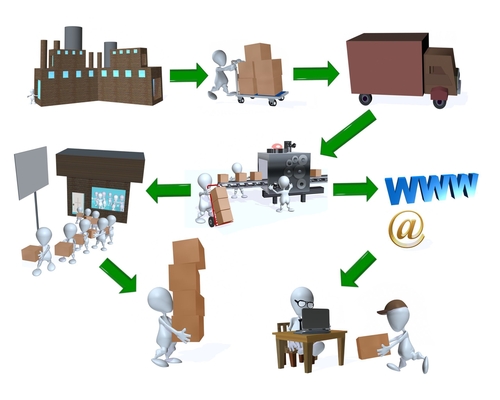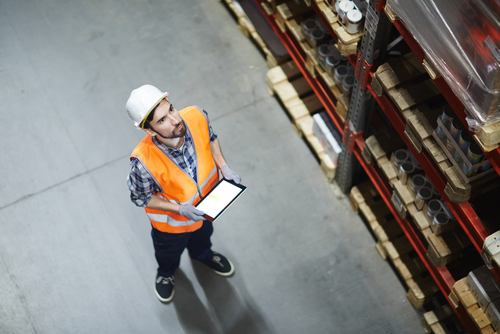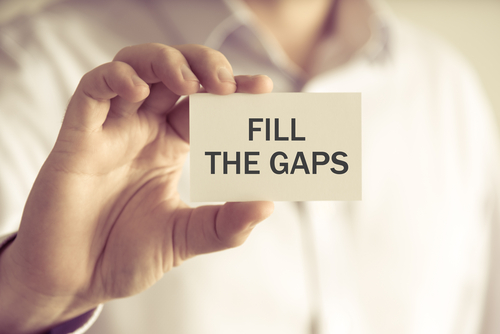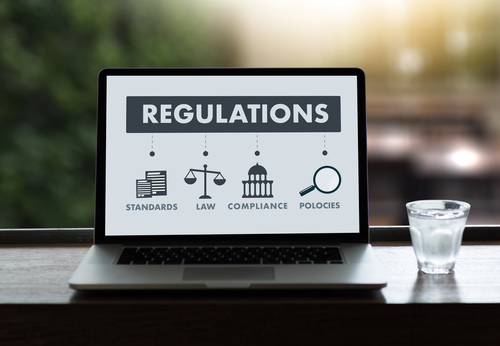Category: Retail
According to The Wall Street Journal, consumer spending is the primary driver of economic growth in the U.S. Manufacturers, suppliers and logistics companies are the industries that benefit from retail profits. Retailers now prefer artificial intelligence to protect profits. This improves customer service as well!
Next-Gen Solutions To Solve Retail Profit Shrinkage – Why Would You Choose AritificiaI Intelligence?
In the year 2018, the global AI market was expected to be worth 7,35 billion U.S. dollars. Also, the global AI market is expected to grow from 150 percent from 2016 numbers, reaching a forecast size of 4.8 billion U.S. dollars. These statistics show that AI is a new factor of production that can help skyrocket profitability for retailers!
Related Reading: Check out the latest trends in AI. Find 7 reasons why AI is expected to play out in 2019.
Why would you choose AI to protect retail profits?
By 2035, AI technologies will have the potential to boost productivity by 40% or even more! This means AI will increase economic growth at an average of 1.7% across 16 industries by this period.
These numbers show a straight 59% increase in retail profits alone! For this, advanced analytics are used to design and develop models. These models are then used to fetch possible outcomes from a wide spectrum of data given to a computer to analyze. From these outcomes, future decisions and actions are fed to the system which learns it. The system can now perform without human intervention! It can make decisions in real-time.
Machine learning, deep learning, and natural language processing are a few examples of AI. Marketing, pricing, logistics, risk management, store management, fraud detection are some inevitable areas where the largest retailers have used AI for decades now!!
AI – How it uses advanced analytics to solve a wide spectrum of retail problems
Manufacturers, Logistics companies, and suppliers are the major industries that support retail sales. Consumer spending depends on fluctuation in these sectors. This drives the economic growth in the U.S! Since these sectors benefit from strong retail profits, “retailers are turning to artificial intelligence to help protect profits” says a report from Forbes!
AI replaces redundant and individual-driven analysis. This is a more convenient method and ensures consistency across the retail chain. Thus AI can replace 1000 people performing the same tasks by answering spontaneously with just the same analysis!
AI can also enhance customer experience and drive sales. Online retailers use chatbots and product suggestions, while stores can enjoy real-time, targeted marketing messages. Retailers have the need to generate chunks of data on a daily basis. With predictive analytics, this data can predict trends and thus reduce the chance of failures by determining necessary changes to improve profitability. Thus the employees can have proper information faster and deliver more consistent results!
Related Reading: AI and Robotics carry the power to enhance customer experience. Here’s a CTO Guide to it.
Solving Retail Problems With AI – Steps to Overcome Challenges And Improve Efficiency To Boost Sales
All retail companies (physical and online), face four fundamental challenges. These can be solved with predictive analytics and an effective data production plan. They include:
-
Siloed and Static Customer Views
Retailers can adopt a complete, real-time strategy by combining traditional data sources with the non-traditional like social media or other external data sources to create valuable insight, resulting in robust fraud detection systems, more effective marketing campaigns, more accurate and targeted churn prediction, and better customer service. This helps them encounter the problems faced by siloed data, where transaction data are separated from web pages, which is again separate from CRM data.
-
Time Consuming Vendor and Supply Chain Management
Retailers can adopt real-time analytics and unstructured data sets to combine structured and unstructured data to create more accurate forecasts or automatic reordering, resulting in optimized pricing strategies and more efficient inventory management.
-
Analysis Based on Historical Data
Retailers can use prediction and machine learning in real time to create predictions based on current behaviors and trends. This helps them predict the client’s next move. Thus AI helps to adapt automatically to customer behaviors.
-
Single-Time Data Projects
It is high time retailers turned towards automated and scalable data workflows. This helps them improve their overall efficiency. This is made possible with predictive analytics using AI.
Related Reading: Enrich customer experience at your retail store. Read along to reveal five secret to win your retail customers.
How AI can Generate Additional Revenue
IDC analysts predict that by 2019, 40 percent of retailers will have developed a customer experience architecture supported by an AI layer! In a nutshell, the major ways in which AI can generate additional revenue and help avoid additional overheads and losses are the following:
- AI can replace redundant and individual-driven analysis for a retailer. This process is far more efficient and it ensures consistency across the retailer’s stores.
- Additionally, employee theft and paperwork errors contribute a high figure of shrink to retail profits. For instance, the National Retail Federation conducted a survey and it turned out that the reason for more than 50% of retail shrink, ie, (the difference between the real ‘on-hand’ inventory and the inventory level recorded in the computer system) is a result of employee theft and manual errors! AI models yield better and efficient results.
- Also, retailers can use AI to predict solutions benefits and functionalities prior to buying it. This way, AI can help reduce risks in retail profit shrinking.
- Choosing a consultant that can address the needs of your company can be another major benefit to reap out of AI to reduce retail profit risks. The following concerns can be addressed with the consultant:
- How to address constraints like budget, time and personnel? Ask your consultant to provide explanations for the outcomes.
- Consider the consultant’s skill sets from their previous projects and work experience before you decide to hand over the responsibilities and contract
Related Reading: Does AI have the potential to drive business value across industries? Read through to find how AI is revolutionizing various industries.
AI adopts next-generation solutions that use predictive analytics to capitalize on their data and knowing that 80% of this data is untapped and unstructured is the winning solution! Want to know more reasons why you can undoubtedly bet your company on AI?
Stay tuned to our latest articles and blogs to learn how AI has managed to perform a quantum shift in computing and in generating revenue to successful retail companies!!
Stay up to date on what's new

Featured Blogs
Stay up to date on
what's new



Talk To Our Experts
Mobile devices with constant connectivity, contextual access to information and products have changed consumer behavior in the past few years. In several recent surveys, it was found that an average of 42% of in-store sales is generated through online shopping searches. Thanks to technology, the distinction between online shopping and in-store shopping are disappearing as retailers implement technology solutions that enrich and satisfy the needs of modern consumers.
1. Integration with Location Based Services
A recent study conducted by Chadwick Martin Bailey and iModerate Research Technologies showed that more than half of smartphone users make use of them in stores to compare prices, find other store locations, look for discounts etc. It also showed that up to 38% of them checked for the availability of a product through an app. This shows how much influence technology has on purchase decisions made by consumers. They basically search for a product and find a store which has it before actually setting out on purchasing it.
Hence, integration with such product searches is essential in order to drive customers to your store. One of the biggest athletics brands in the world ‘Reebok’, used location-based services to drive conversions in a pop-up store in Paris by participating in a two-day long immersive fitness event in collaboration with the fitness center, LesMills. At the end of two days, there was a conversion rate of 35% or an increase of 350 purchases in 2 days.
2. Tracking Consumer Engagement Using QR Codes
QR Codes allow advertisers to provide more information to their target audiences online. Information about the company or the product allows customers to engage directly with the retailers using their smartphones. QR codes now virtually being everywhere from product brochures to restaurant menus, provide an effective way for customers to interact with the brand better.
Moreover, QR codes help facilitate transactions seamlessly that will greatly enhance the shopping experience of customers. It can push your store to embrace an omnichannel retail strategy that will prove more effective in targeting customers and converting into successful sales. Besides, it leaves you sufficient data about customers, which will help track and implement better strategies and experience.
3. Focusing on Maintaining Customer Loyalty
Customer loyalty is an important retention strategy for retail stores. Maintaining a consistent experience is the first step to keep up loyal customers in visiting your store than going for another. In the face of stiff competition, loyalty programs through privilege cards, incentives, rewards, email newsletter offers, etc. are effective in driving footfalls to the store. Privilege cards allow retailers to develop personalized email campaigns that provide value to the customer based on their purchase history.
4. Measure Campaign ROI Using Digital Coupons
Coupons have always been something that customers look up to. Almost 80% of them use coupons. Digital coupons have a further advantage of being available on a mobile device. Retailers can create digital coupons, that can be used in a store and provide them to customers. Since the stores are well equipped with the technology to read or scan the coupons right from the mobile device, so the customers don’t even have to take a print out.
Read : How product ordering system integration with CRM helps in purchasing?
5. Online PR with Special Events
Special events like a sale or the launch of a new product can be organized and better publicized by using an app sending push notifications. Discounts or giveaways can be offered too. Such events always help in increasing sales while mobile apps help in giving them a much wider reach among the customers. For example, the two-day event held by Reebok and LesMills mentioned earlier made use of mobile technology to transmit messages to LesMills app users, informing them about offers and discounts according to where they are.
Summing Up
Mobile apps are clearly a great way to drive consumers to your store. It brings in more convenience and offers personalized services, which by the way stands at the helm as the driving force behind increased sales and customer loyalty. The modern consumer needs a redefined shopping experience and gets ahead of conventional practices like queueing up for checkout.
Mobile technology can do just that by enabling the customer to make and complete their purchases hassle-free. Just like Reebok, there are many other brands which have made use of mobile technology to boost their in-store sales. In this age where technology is inevitable in almost every industry, it is now evident that even the retail industry is no exception.
Do you have any insights on improving the customer experience at retail stores? Tell us your insights below.
Related Reading : How a Smart Product Ordering System Helps Retailers and Wholesalers
Stay up to date on what's new

Featured Blogs
Stay up to date on
what's new



Talk To Our Experts
We are living in an era of unprecedented changes.The industrial revolution brought in an entirely different range of new material good which improved people’s lives. Today, we are witnessing the next big revolution which is transforming the lives of millions better known as revolution 4.0 or popularly coined the Internet Revolution.
The e-commerce dilemma
The e-commerce Industry faces a bunch of problems like maintaining customer loyalty, unwanted product returns, price wars & the real competition with brick & mortar based businesses.
Let’s focus on one problem for now & understand how we could solve it properly. Customer loyalty is very core to many businesses, as they believe that their customer is their king. But, customer loyalty between e-retailer and customer is built on various factors like shopping experience on the mobile app/website, prompt delivery of goods and finally the real quality of goods as well.
When it comes to building customer loyalty, e-retailers don’t solve the basic problem i.e on-time customer support. Instead, e-retailers usually try to build customer loyalty by offering hefty discounts, unwanted promotional activities and at times with gamification.
Taking customer support offline
Customer support should be the first priority in any type of e-commerce business because at the end of the day your customers should remain happy. Any business can provide support to its customers based on the infrastructure and resources available. It can be done online & offline depending on the support requests received every day. Offline Support can be done simply by sharing a helpdesk/customer support number with your customers.
Few things to take care while setting up an offline support desk is as follows:-
-
24/7 availability
A 24-hour open hotline is an added advantage as well as a USP for e-commerce business, usually, customers tend to buy things from places which provide round the clock support. The hotline reaffirms the trust and raises the credibility of the customers online.
-
Special number
It is very easy for people to remember a special or fancy number. The key here is to have a number that resonates the brand value of the website as well. Moreover, with a special number, the brand positioning of your website gets a certain level of upliftment.
-
Open lines
Generally, customer support centers miserably fail to provide support to everyone who calls in. The call drop rates are very high for support centers which receive a high number of requests. It would be impossible to attend to each and every call so that customers need not wait for a long time and have enough support staff to take support requests.
-
Interactive Voice Response System
IVRS is an “easy to implement” the system for businesses who receive more than 150-200 calls/day. IVRS has many options which can be configured manually and the IVRS System can be integrated to the main Support Network of the business to make things easier for the customers as well as the support staff. Care should be taken about how perfectly the IVRS can be integrated into the existing system.
-
Customer support script
Customer support script which reflects the values & ethics of the business must be followed by the support staff and customer support managers should ensure that the script is being adapted promptly because they are the voice of the business and whatever they say has a direct impact on the reputation of the business. If the median age of users in your user base is more than the age of 40 years then offline support is the best, because that generation still believes in the power of telephone.
Taking customer support online
Online Support can be provided using many platforms which is readily available in the market. Conventionally, online support is done using support tickets & Live Chat, essentially a helpdesk software where support agents resolve or escalate the support request from the customers ensuring that every customer is given equal priority. Innovation in this space is always a plus provided it increases customer loyalty, retention and most importantly brings in value.
Few things to take care when providing Live Chat or Ticket Based Support is as follows:-
-
Proactive & quick response
Customer support executives must be trained to provide support proactively & ensure that the customer doesn’t have to wait for a long time to get the response.
-
Think of the customers as brand ambassadors
The sole reason a customer leaves a place of business is based on the way they are treated hence always think of customers as your brand ambassador.
-
Controlling the nerves
There would be moments when the customer might be on a rage and is berserk with different kind of provocative words. Responding to the customer with a cool head and best way out is to think ahead and provide a solution for the customer rather than respond aggressively to the moment. Always be prepared for such scenarios.
-
Staff training
Training the staff to use the helpdesk software is an added advantage it would reduce the fatigue in the initial days of support
-
Self-service
Maintaining resources online like a knowledge base, FAQ, forums, tutorials which to close to users and in doubt-generating places.
-
Measure, monitor and improve
It is often forgotten that support efficiency can be measured. Keeping KPIs and finding ways to constantly improve them would certainly add tremendous value to your business as well as the Happiness Index of the customers. Come what may, the ultimate goal of the customer executive should be to provide 100% customer satisfaction.Taking support online or offline completely depends on the nature of business & the value addition you wish to give your customers. And, it is important to keep a check on the additional expenditure incurred to keep the support infrastructure in place.
The era of chatbots is here
Powered by cutting-edge Artificial Intelligence & Machine Learning Algorithms presently there are many chatbot services available in the market which can be easily used by any e-retailers to give an immersive & intuitive support mechanism for the customers in almost any messaging platform.

Chatbots are a simple to setup and can be integrated into any website, with many services online chatbots are presently being used by many small-scale e-retailers to run their support system. The advantages of having chatbots are the control you get over the scripts and the knowledge base the chatbot has access to. Moreover, compared to real human, the cost required to maintain a chatbot support system is very less. Chatbot certainly is a lucrative option for entrepreneurs who wish to cut cost on the operational side but customer support without a human touch has its own limitations as well.
Major Takeaways from Having a Support System in Place:-
-
Retains customers
When your customers are happy, he would come with repeat orders often. The relationship you build with the customer would have a lifelong impact on the success of your business
-
Creates word of mouth
A good customer service certainly generates excellent word of mouth and there is nothing better than word of mouth to promote & market your business. If we look at the success of many e-commerce websites, we would find that word of mouth has played an exceptional part.
-
Profitability
When the service is good, word of mouth and references are also good. It is very certain that your business would acquire more customers at a fraction of a cost you were supposed to. The returns you earn would be certainly much more than the returns you get by using the conventional form of marketing to promote your business.
-
Motivation for you and your employees
When a customer praises your business, it also boosts your employee morale. Naturally, over a period of time, your confidence rises on your business and you now know that giving good customer service is the key to build confidence in your employees, who will be empowered enough to keep their customers happy.
-
Competitive Advantage
Last but not the least, your customer service and the manpower that you employ for service can become your competitive advantage. If your employees themselves are building relationships with customers, then they will not allow a competitor to enter or place toehold. Hence, your business becomes sustainable and competitive and difficult to beat.
Thus, as you can figure it out yourself now, an extraordinary support system is key to the success of your business and it not only impacts your customers it keeps your employees also on the run to grab a pie in the market. Grow your retail firm multifold by seeking our expert advice. The sooner you build a competitive advantage, the better it is for you and your business.
Stay up to date on what's new

Featured Blogs
Stay up to date on
what's new



Talk To Our Experts
The psychology of color in human beings is a subject of’ research and ‘has been under study for long periods. The color scheme that is selected by the retailers for decoration, the design of the logo, content on the website and mobile applications etc. can have a direct impact on the sales.
Importance of Color
According to a research, the first impression of the customers plays a significant role in retail and 62% to 90% of it is based on color. Aesthetic appeal is of utmost importance for the shoppers and 52% do not return to the store if they dislike the aesthetics. The primary and deciding factor for 85% of the shoppers while making a purchase is the color. Signage is also an important factor for retail and it is often observed that the ads and banners are designed using red as the primary color.
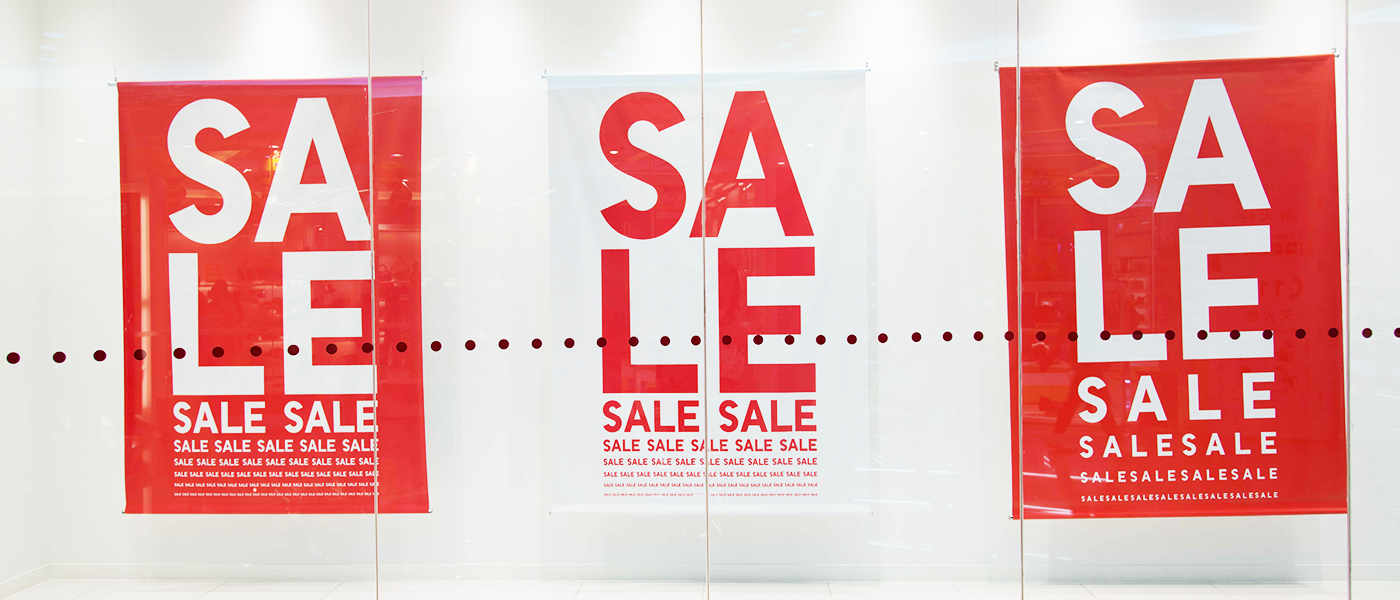
Color Schemes
There are various color schemes that the retailers may use in their store and on the web applications. Some of these color schemes are as listed below.
- Monochromatic Colors: Varied tones of a single color are used under this scheme.
- Complementary Colors: The opposing colors on the color wheel are used in this scheme.
- Analogous Colors: The colors that are placed at left or right of a color on the color wheel are used.
- Triadic Colors: The colors placed at 120 degrees apart on the color wheel are used as per this scheme.
- Split-Complementary Colors: A color is selected as a base color and two colors that are adjacent to the complementary colors are used.
- Rectangular Colors: Pairs of two complementary colors on the color wheel are used.
- Square Colors: Four colors placed evenly on the color wheel are used.
There are also combining color schemes that are often used by the retailers in order to enhance the visual appeal and attract an increased number of buyers.
Influence of Color
Color is a critical variable that has the power to impact the psychology of a human at conscious and subconscious level.
The colors can be used in the following ways to have a positive and appealing influence on the customers.
- The retailers shall select an effective theme for their store and shall then decide upon the colors to explain the concept to the buyers.
- There are certain colors, such as green and blue that may have a calming effect on the shoppers while orange and brown can have a reassuring impact.
- The retailers must understand the ability to alert and appeal their buyers through the use of adequate colors. The use of bright colors like red and yellow can grab the customer attention.
- Brand recognition can be enhanced by 80% with the correct use of colors. Logo colors and color scheme should be intelligently selected.
- The category of product and the choice of color shall go hand in hand. For instance, the sleek look of an electronic product may vanish with the use of bold and bright colors.
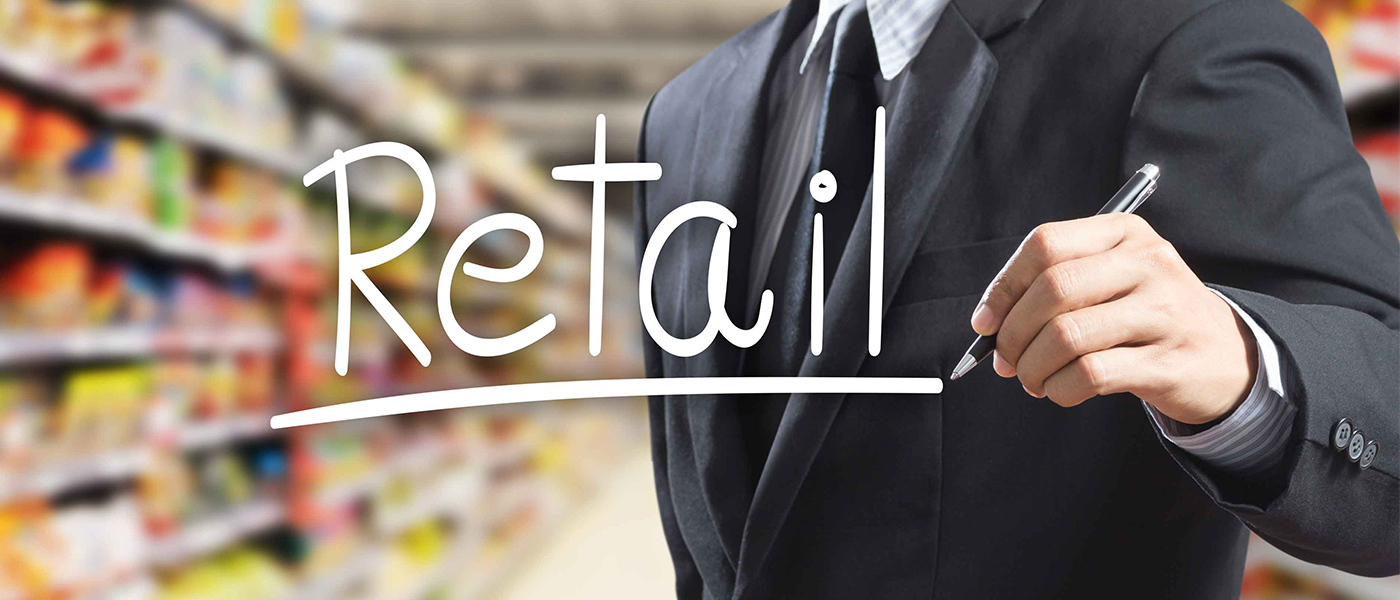
Consumer Reaction to Red Color
Red is a color that is usually associated with love and power. The color also has the ability to enhance the heart rate and also activates the pituitary gland. The use of red color in the retail stores visually appeals the buyers and grabs their attention.
A majority of retailer use red as the color for sales signs and for displaying other significant details. It is because more value is added to the aesthetics and it can be easily read from a distance.
A research was carried out to understand the importance of the color in a better manner. A male model was selected as the communicator and was asked to pose for two different pictures wearing a red sweater in one and white sweater in the other. Persuasive arguments were used to understand the color psychology of 94 undergraduate students and the picture with red sweater was rated more persuasive.
The use of web and mobile applications has increased in the recent years and the color of the website or application logo along with the choice of text color shall also be judiciously picked up. The online shoppers make their purchasing decisions largely on the basis of the color scheme used.
Stay up to date on what's new

Featured Blogs
Stay up to date on
what's new



Talk To Our Experts
Predictive Analytics has put a strong footing in the retail sector where companies are able to understand what their customers want, what products are in demand and are able to allocate their resources optimally. Going a step further, this very analytics is beneficial for targeted marketing to an individual level. Yes, individualization via predictive analytics is the biggest boon that companies can use to their advantages. Achieving the most granular of data today is possible and such multiple endpoint creations help in providing a customized solution for individuals instead of putting them under a group.
Why Individualization?
The huge wall between physical and online retail stores has fallen due to rapid digitization. With Omnichannel marketing strategies and by utilizing predictive analytics, a company can find what a particular customer requires. Their past history and behavior help in predicting what they might want or what more can they be offered. Individualization helps in narrowing down the possibilities of product attributes and can be presented as per the user’s data.
For example, if a person is constantly trying to look for a particular color or is worried about size, the retailer’s website can show them such options instantly. These can be even used for personalized emails or messages that can lure them to a nearest retail store.
Making the Most of Predictive Analytics
There is vast information available that can be used in different ways to implement predictive analysis. Retailers can tap into it and use it in the following few ways to make the most of it.
1. Improve Targeted Marketing
Individualization in a way invokes ‘a feeling of being special’ in the users. At the retailers’ end, it merely helps in offering these customers what they would purchase, understand their styles, trends, and sum up a personalized service. It can be even leveraged to understand what they want so that retailers can try to acquire or create a new segment of products for the same.
2. Keeping Them Interested
In today’s time and age, the pool of information for both retailers and users is so much that they can be lost in it. Customers are quick at switching from one retailer to another when they do not get what they are looking for or find things uninteresting. Using predictive analysis can definitely reel new customers but at the same time, it will keep them engaged. Retailers are able to sense if the customers are staying or leaving by simply surfing or checking the purchase history. Such actionable intelligence can push the retailer to bring back the customer by throwing incentives or providing offers that are based on their data analytics. Also, such data helps in keeping the current customers engaged by sending them timely offers and planning appropriate promotions.
3. Physical Store Value
User data analytics such as demographics, financial market conditions, and recent customer purchasing history can be used to understand where customers hang out the most. Although here it is more of a group analytic, such a data can help retailers to understand where to open a physical store location. Once the store is in place, individuals can be lured via various offers to a place where they prefer to visit.
4. Offering Better Customer Service
Predictive analytics helps the retailers to come up with a better marketing plan. Based on their individual data such as their interests, purchase history, likes, and dislikes, retailers can help them make informed decisions. Also, offering query resolution at individual levels makes the customers feel valued and can retain them in the long run. Such smart analysis will also help in using social media marketing to the fullest of potential.
Predictive Analytics for individualization can be used as the ace in the already swarming pool of marketing strategies. Get in touch with us to understand how predictive analytics tools can help in maximizing the potential of such huge data gathered and reach out to your customers better.
Stay up to date on what's new

Featured Blogs
Stay up to date on
what's new



Talk To Our Experts
Productivity is the mantra to success in today’s highly competitive world. Expanding the customer base and taking large margins are both tough in a highly competitive world. In such a state of affairs, improving productivity is the only sure shot way for enterprises to stay in the game, even as they painstakingly battle it out for the new customer.
Most enterprises understand the indispensability of software to drive sales and improve productivity in today’s tech-dominated world. However, many enterprises make the mistake of deploying generic software. Such software may come with far lesser hassles to procure and deploy but can sap the very vitality of the enterprise.
Custom Design Gels in with Entrenched Systems
A retail software never works in isolation. Unless it syncs with the enterprise systems it is supposed to serve, it causes a discordant note, and executives end up spending time trying to fix the software, rather than make sales.
The generic software offers a rigid structure, with limited flexibility, and expects business to follow such a structure and approach. Any enterprise is an ecosystem with a culture of its own, and processes which have evolved over time. While change is possible, and maybe even desirable, it requires great effort and energy. Trying to change the enterprise system for the sake of the software is foolhardy. Any change should ideally be for the better, and a thought-out decision, rather than being forced due to the exigency of implementing software.
Custom build retail applications gels in seamlessly with the entrenched enterprise systems. Of course, the caveat is a well-designed app, developed after a thorough study of how the enterprise works.
Reach Out to Target Customers Effectively
Custom retail apps make it easier for the enterprise to reach out to its customers the way they want to, through the channel of preference.

Today’s demanding customers prefer varying channels, such as email, SMS, social media, and more. Marketers require a seamless way to leverage the preferred medium while delivering the required content.
Grouping the brand’s content repository into an interactive management app makes it easy for sales executives to email or SMS customers directly, generate social media posts, post content on different websites, and do more. When all effort is through a single console, marketers are spared time and effort searching for information and taking it to the required channel manually. In fact, regular or routine messages may even be automated, to be dispatched at a predetermined time. Marketers may use the time saved on their core competency, and increase sales further.
Custom retail apps go beyond, enabling personalized shopping experience and support to customers. Brands would do well to connect customers with a salesperson proactively. The salesperson would, in turn, need to be equipped with all information regarding the customer, including their publicly available demographic information, purchase history, likes, preferences, online searches, and more.
Custom Apps Enable Seamless Communication
Seamless and prompt communication is the lifeblood of today’s enterprises. Today’s customers are highly fickle and demanding. They seek instant answers and move away if the business cannot satiate their quest fast enough. A custom retail app, inbuilt with collaboration tools, and configured to tap into information from all depositories, delivers not just faster responses, but also more user-friendly communication.

Marketers, sales executives, and other enterprise stakeholders, powered by an in-house app in their smartphones can remain in touch, respond to the customer, and collaborate seamlessly, from any location, at any time. Sales executives may look-up or access critical information when at meetings with clients. Managers, equipped with real-time insights, may enforce better control over the workflow.
Custom retail Apps Perfect Analytical Insights
While most generic software offers some analytic capabilities, any custom software worth its byte offer deeper and invaluable insights into customer behavior.
The obvious and most apparent need for analytics is to view sales data unhindered. Getting real time sales data, drilled down to store, unit, salesperson, and other minute levels enable taking timely action to boost sales and resolve any trouble spots hindering sales.
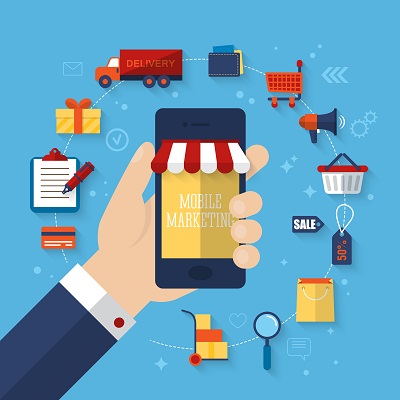
A comprehensive custom build sales management suite monitors sales activities on a real time basis, and measure the impact of various marketing and promotional campaigns. Linking sales to marketing campaigns make it possible to evaluate the success rate of specific campaigns, making explicit the ROI of marketing and other interventions.
A spin-off benefit is insights on how executives and other employees interact with the app, as in the time required for completion of specific tasks, whether the tasks are completed in one go, and more, paving the way for workflow improvements. Event tracking also becomes easier, and automatic reports save time and money.
It is poised to get better. More and more retailers are now integrating beacon technology to their apps, to track how customers behave in the store, how many times they visit a certain location, and gain other insights not easily available before. Marketers could use such insights to tailor custom offers and position their products better. Sending out relevant and timely messages to shoppers not only cater to the immediate increase the likelihood of purchases but also improve brand retention, beneficial in the long term. Needless to say, it improves the strike-rates of marketers manifold, sparing them wasted effort resultant from guesses and hunches.
Custom Apps Offer Solid Templates
All software gather data, but data is useless unless put into use for actionable information. Often, businesses fail to harness the data properly. Smart businesses opt for deep customization of their reports, with solid templates to ensure each manager or supervisor get insights that really matter to their task. The best reports are dynamic, populated with real time data. In today’s fast paced and highly fluid world, historical data is as useful as yesterday’s newspaper.
The humongous benefits of custom retail apps notwithstanding, success depends on such apps being easy to use, with little learning curve or training required. It requires a competent and talented team of developers who know their stuff, to leverage the power of simplicity and roll out intuitive custom software for the business.
Stay up to date on what's new

Featured Blogs
Stay up to date on
what's new



Talk To Our Experts
The past decade has been a game-changer for the way businesses operate in the realm of retail. The advent of e-commerce and its subsequent boom has compelled brick and mortar outlets to undertake a paradigm shift from a profits-first to a consumer-centric approach. Failure in conforming to new consumer demands fueled the retail apocalypse that toppled the brick and mortar landscape. Thus, we see retail giants like Bon-Ton Stores Inc., Sears and Macy’s filing for bankruptcy and liquidate their holdings.
Implementation of targeted mobile promotions, loyalty benefits, e-payment gateways is just some of the strategies adopted by retail outlets to maintain a competitive advantage in the face of fierce technological overhauls. With disruptive innovation gaining a strong footing now more than ever, the need to constantly reinvent and augment is more pressing than before. Here are five key disruptive technology trends that you need to sync your business model with, to offer consumers retail experience par excellence:
Related Reading: 5 Ways to Enrich Customer Experience at Your Retail Store
1. The advent of Artificial Intelligence

Robots and AI bots capable of not just learning but also executing real smartness are the new focus in tech innovations. Retail giants are already experimenting with ways to implement these AI bots in their business operations. A strong case in point would be Amazon’s no-checkout cashier-less convenience stores, Amazon Go being tested across different states in North America.
Then there are self-driving grocery stores and automated trucks making home deliveries that are still undergoing trials. Of course, that is not to say that AI dominating retail operations will become the new normal tomorrow, but it is in the offing. Businesses that are in the retail sector for the long haul will stand to gain from their preparedness to embrace this change.
2. The Internet of Things
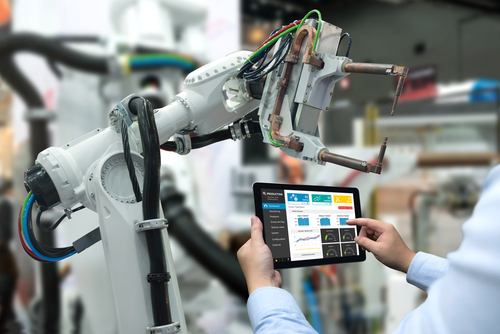
The ability of devices to interact with humans, understand commands and execute them is passé. The Internet of Things (IoT) puts the limelight on the ability of machines to interact with one another. The slow but consistent development of IoT is shaping up a new ecosystem where our gadgets will be able to operate without human intervention. Besides, the global market size for IoT in retail is expected to grow around 94.44 billion by 2025.
The emergence of IoT will inevitably alter the dynamics of the way consumers interact with retail business and the way businesses interact with distribution networks and supply chain partners. More importantly, it will usher in a connected customer model by relying on smart-store applications like smart shelves, beacons, and customer service robots. Making room for these swift connections powered by the internet will help you build a business model that is future ready.
3. Striking the Online-Offline Balance
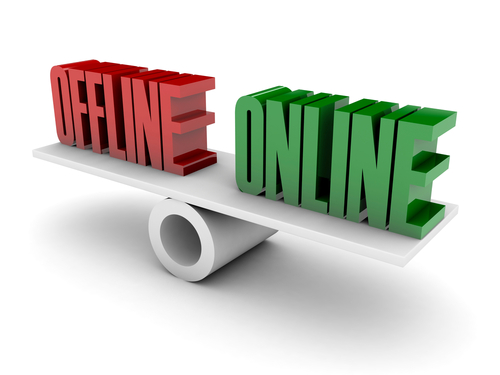
It is the age of digital customers where the lines between online and offline existences are forever blurring. Brick and mortar businesses need an online extension to sustain themselves. Now, the spotlight is on understanding the dynamics of virtual and augmented reality and creating a marketing strategy that caters to the customers’ dual persona – considering their social media image and real identity – to encourage continued interactions and conversions.
The result – a complete overhaul of the shopping experience by bringing in a consistent omnichannel approach built around a convenient digital backend. For instance, Oasis, the UK-based fashion retailer is closing the gap between in-store and online purchasing by merging shopping experiences across its mobile app, website, and brick-and-mortar stores.
4. Personalized Shopping Experience

Take a look at how e-commerce websites function – bringing customers exactly what they need, every time, on every device, without fail. This carefully curated shopping experience eliminates the need for buyers to browse through the inventory of online stores to find what they need. Over time, this approach toward shopping has been normalized to an extent that customers expect the same out of their retail shopping experience too. Installing smart screens, tablets etc. is one way of using technology to recreate the same sense of personalization in your retail business.
5. Banking on Data
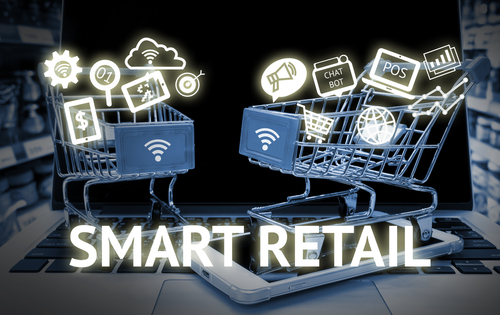
Big data is the next big thing in terms of business operations. Multinational corporations are pumping in billions of dollars to assimilate and organize this seamless information to create the right kind of marketing strategies. While big data may be out of your reach as a standalone business entity, you can create your own pool of data and use it to offer improved retail experiences for your customers.
Fun quizzes, for instances, are a great way to gather insights into your customers’ buying preferences, which can then be used to offer personalized product recommendations. You can take it a step further by tracking these recommendations to know if they are appealing to your customers and tweak them accordingly.
Related Reading: How Big Data and Analytics are Evolving Customer Experience in Retail
[Courtesy : European Bank for Reconstruction and Development]
Meanwhile, other technologies like virtual and augmented reality will continue to grow in popularity and efficiency. As a retailer, the onus of using these disruptive innovations to offer a seamless customer experience falls on you. Pairing with the right technology partner is the first step. Get in touch with our experts today to uplift your retail experience with cutting-edge software solutions.
Stay up to date on what's new

Featured Blogs
Stay up to date on
what's new



Talk To Our Experts
Technology is now an inevitable part of the retail landscape. Any enterprise worth its byte would now have an integrated POS and CRM suite, with features to take care of the entire gamut of operational functions, including sales, transactions, inventory control, suppliers and ordering management, and more. Many establishments integrate their marketing and other functions as well, rendering a comprehensive enterprise-wide system. However, over and above such infrastructure backbone, what matters is the design of the system.
While the importance of the “human touch” can never be understated, many enterprises place to a stake on the human effort. Depend on such “human touch” to advance a process leaves such businesses susceptible to various risks, such as human error, communication gap, accountability issues, disjointed experiences in different stores leading to poor customer satisfaction, and violation of compliance regulations owing to an oversight.
A systems-driven approach is a key to overcome such issues. Devising sound, robust, and foolproof systems, and overlaying the human element, or the personal touch, above such systems, offers the best of both worlds.
The Superiority of Systems-Driven Approach
A system driven approach, with well-drawn out processes for all functions, complete with checks and validations improves employee productivity, deliver organizational efficiency, improves the bottom line, and results in better customer experiences. In fact, the various time-tested quality standards, such as Total Quality Management and ISO primarily mandate establishing systems and following it.
Systems driven approach offers as clear cut process for everything, and ensures all validations and checks are implemented at the right time. This frees the business from the risks of human error or oversight. The best of effort notwithstanding, humans are prone to make errors. In the retail business, for example, heavy rush may result in the shop-floor executive skipping some items in billing, some ordered and paid-for items falling off the packing and shipping delivery chain, or an important customer being ignored.
The necessity of sound systems manifests itself, especially in inventory management. Relying on human estimation or manual practices may result in excess inventory or shortage of inventory, both of which suck the winds of a retailer. The National Retail Federation estimates U.S. retailers losing $224 billion owing to excess inventory and $45 billion from having inventory in stock. A systems based approach, which automates the inventory handling process, and ensures optimal inventory for various scenarios help cut down such losses, and in the process deliver customer delight.
A systems-driven approach also promotes accountability. The system fixes specific roles for everyone, broken down into actionable tasks. The tasks are transparent to everyone in the supply chain, with the option to track progress. The employees get role clarity and the right tools to perform their tasks easily. Supervisors and managers may step in at critical points to resolve trouble-spots, or even pre-empt issued proactively.
Another key blind spot for businesses, especially retail businesses, is gaps in communication. Lack of seamless communication systems makes the enterprise dysfunction. It leads to various ills, such as hold-up of processes and the supply chain for want of information on how to proceed, employees doing a wrong thing owing to lack of clarity of instructions, executives providing incomplete, vague, or misleading information to customers, and more.
The two basic prerequisite to smoothing the communication flow is:
- Eradicating data silos and link the entire gamut of data repositories to a single pane or control
- Establishing a robust single platform for collaboration
Most enterprises underestimate the implications of compliance issues. Regulations may seem like a drag, but failure to comply with regulations, and filing timely reports can result in heavy fines, loss of reputation, and may even sound the death-knell of the business. Many regulations make for sound security and control practices in its own right. Establishing systems make it possible to embed the regulatory requirements into the process, and also generate compliance reports easily.
The Other Side: The Ills of the Superiority Driven Approach
An often raised grouse against the systems driven approach is its inflexibility and its emphasis on the process over customer convenience. As the adage goes, following the system rigidly may lead to the classic case of being “penny wise, pound foolish.” The fault, however, in most cases, lies more with poorly designed systems than the approach itself.
Consider the case of customer care where the customer seeking to raise a service request or return an item is greeted with an automated menu and has to press an infinite number of options, before getting to speak with a human voice, if at all. The long delay to resolve what may be a simple matter would be out rightly frustrating. Instances of such insensitive menus having driven away customers are far too many. Such issues put the spotlight on the systems design. The option in the above example would be to provide two streams, a self-service option with automated menus, and an option to hear a human voice directly when the human agent guiding the customer to select the correct options. Another option would be to offer different numbers for different issues, reducing the waiting time. Yet another option is to offer multiple modules, such as email, live chat, and more, to reach out to customer support, which would allow frustrated customers to try other channels.
Another often raised drawback of the systems driven approach is the inability of the business to seize the moment. A high-value customer may have a special request, which the rigidity of the system may not facilitate. The customer, offended, may take his business elsewhere, or the business may simply lose a good opportunity. Consider the case of a regular high-value customer wanting to hold the last piece of a product for a day, before he makes up his mind, which the system may not allow. The solution is to build flexibility into the system, allowing the “humans” managing the system, to exercise options in all possible eventualities, with a proper chain of authorizations.
It is also pertinent to ensure the system is flexible and scalable. No business can expect to survive by remaining static in today’s highly fluid business environment. Only systems with inbuilt flexibility and scalability to adapt to different needs and situations as they emerge would succeed. Likewise, the onus is on the stakeholders to review the system from time-to-time and make changes as required.
Why Systems Based Approach Works
An intuitive system which offers effective coordination, sync, and validation makes the business process more transparent and efficient. Such a system, delivered to relevant stakeholders in the form of intuitive smartphone or tablet based apps, would:
- Make explicit to all stakeholders what exactly needs to be done at their level, and at what time.
- Render role clarity to employees and other stakeholders.
- Provide tracking and monitoring facility, for managers and supervisors to remain in control, and at the top of their game.
- Enable field service agents, on-the-move managers, and others, to remain connected always, even from geographically isolated places, and when commuting, reducing hold-ups, accelerating the pace of work, and seizing extremely time-limited opportunities.
- Send out notifications to the main office, to managers, floor level supervisors, or other stakeholders, keeping them updated in real time of any critical incident or action point which requires action or resolution before the supply chain or workflow can proceed.
- Track and collect payments on a timely basis, leading to optimal allocation of resources
- Automate route processes, right from promotional emails to reminders, and from updating accounts to scheduling duty rosters for customer support agents, freeing the enterprise from non-productive “staff” functions. Enterprises can focus their energies on their core business instead.
Mobile apps integrate and pull in data from the entire gamut of enterprise systems and repositories, from the CRM suite to the ERP system, and from accounting software to HRIS, and more. It delivers comprehensive, up-to-date-information, free from data silos and other inefficient plaguing manual handling and analysis of data. It efficiently links various aspects of business operations, enabling the enterprise to work seamlessly and with optimal efficiency. The net result is happy employees, happy customers, and a well-oiled system which seizes all opportunities which come its way.
Stay up to date on what's new

Featured Blogs
Stay up to date on
what's new



Talk To Our Experts
The retail market has seen a drastic change from physical stores to online sales platforms. With the advent of the internet and the freedom to access it from anywhere, brick-and-mortar stores have turned into a digital retailer and new breed of e-retailers have arrived. This new e-retailing option provides users access to a virtual mall of sorts, at their fingertips. The rapid digitization is benefiting both retailing sectors to reach out to mass audiences and the customers to get access to products and brands worldwide. Such accessibility enables them to attract customers worldwide and take their game up a notch higher.
Retail sectors have now access to a humungous amount of Big Data that can be further used to reach out to larger audiences. Omnichannel marketing strategies and some new-age technology can work wonders at boosting the customer experience. The adoption of the said technology in the improvement of marketing campaigns and augmenting supply chain operations helps in offering better success rate.
Analytics – The Way Ahead for Retail
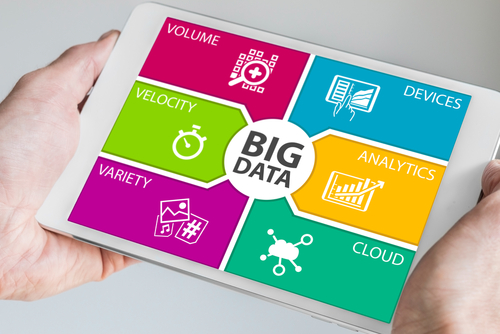
There is a fast-paced growth in retail consumption due to urbanization. Customers have better income and access to technology to keep changing their preferences. Big Data and Analytics are helpful when it comes to studying these changing patterns in customer preferences and behaviors. It also helps retailers to change their business model and rethink strategies to stay ahead in the game. The idea is no longer targeting a group of audience but offering personalized solutions for everyone. As per MRC statistics, the global retail analytics market stood at $2.25 billion in 2015 and is likely to skyrocket up to $7.47 billion by 2022 with a CAGR of 18.7%.
Understanding the Customers

Using predictive analytics to understand how the customer’s function, react, and purchase is highly critical for every retailer. Understanding their purchasing pattern and predicting future behavior can help send targeted advertisements and offers to the customers. Such unique targeting provides the opportunity for retailers to better engage with their consumers directly. Using POS systems, social media interactions, and online shopping patterns, retailers can achieve a deeper insight as to what sells. It also helps them understand how to model their stores, add inventory to their warehouse and reach more individuals.
Excellent Customer Experience

Companies that use data analytics can target customers as per their browsing and purchase history. Understanding what exactly your customer requires is a win-win situation for both the parties. These researched targeted products can be sent to users via customized emails and SMS to pique their interest. Targeting marketing provides them with options that predict their purchase intent. It is important that in-store management can provide insight driven shopping experience.
Technologies to be Adopted
Using Big Data and Analytics largely depends on what kind of technology is used by Retailers. Apart from having just POS data analyses to predict customer behavior, data can be even used to make pricing and marketing decisions. Some of the technologies that offer customers a smooth shopping experience while helping the retailers enhance their services are –
1. Radio Frequency Identification (RFID) – Radio Frequency Identification (RFID) is changing the way businesses track inventory and assets. This technology is hired by companies for on-shelf inventory management. But there is more to it than meets the eye. It can be smartly used to place items on the shelves where the consumer is most likely to go. These can be items that are limited to the season or on sale.

2. Wi-Fi Analytics – Here, data patterns are created with respect to real-time customer behavior inside the store. It helps in understanding the clusters of the store where maximum customer time is spent and which zone has the highest purchase. Such intelligent analysis helps in determining what the inventory customers are seeking. The store can change their inventory or position of items accordingly to make the customer’s shopping experience a breeze.

3. Beacon analysis – These low-cost Bluetooth sensors are a must for every retailer. They can be placed strategically inside the store to send proximity marketing based on customer location inside. Customers who are seeking an item can benefit not just from options provided but also avail discounts and coupons offered via it.
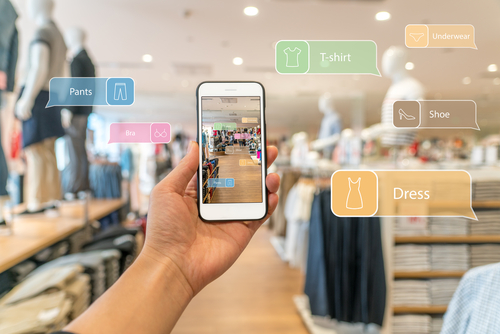
Customers love being pampered and the best way to do that is to make their life easy, not just around the store but also via marketing to invite them. Grow your retail firm multifold by seeking our expert advice and IT solutions to make the most out of Big Data and Analytics.
Stay up to date on what's new

Featured Blogs
Stay up to date on
what's new



Talk To Our Experts
Today’s business ecosystem is heavily tech oriented, leaving retailers with little option but to keep track of the latest developments and co-opt it to their business. Technically laggard retailers are unable to seize the moment, and in the process, risk displeasing their customers and losing opportunities. Here are three tech trends every retailer needs to implement now, in their apps and other digital assets, to keep up with the times and take their business to new heights.
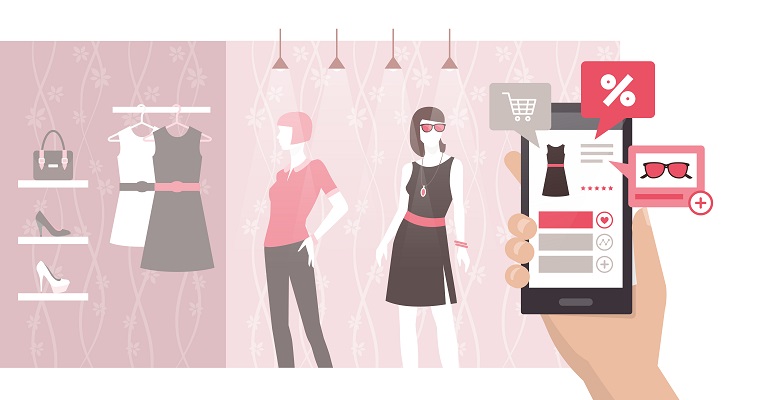
1. Offline Capabilities are a Basic Requirement for Apps
While Internet connectivity has grown leap and bounds, and most shoppers now have smart phones, it is still not given everyone will be online all the time. Many areas still experience poor connectivity or slow speeds. Also, while many establishments and even public places offer free wi-fi, and packet data is now cheap, it is not necessary all shoppers can, or will want to remain connected all the time.

Marketers who design their apps assuming full-time internet connectivity shoot themselves in the foot. Deploying apps that do not work, or refuse to store the entered data unless connected, is a sure shot way of annoying and driving away users. The best apps work online, syncing and updating data to the cloud based servers seamlessly in the background, whenever a connection is established. For marketers, it translates to the ability to access customer details in the field and being able to upload information to the CRM or any other enterprise suite, at any point of time, from any location, without having to wait for an internet connection.
In any case, technology has developed to the extent it is no longer a matter of simple online-offline switch. One technology which has attracted a tremendous interest of late is beacons. Beacons, powered by Bluetooth Low Energy technology are now in widespread use in malls and retail establishments, and beacon powered apps issue notifications and other vital information to customers within range. A big success case of this technology is at London bus stops, to notify the waiting commuters about bus arrivals and schedules. Likewise, many movie theatres have successfully deployed the technology to beef up indoor mobile marketing to theater goers and deliver a better experience to them.
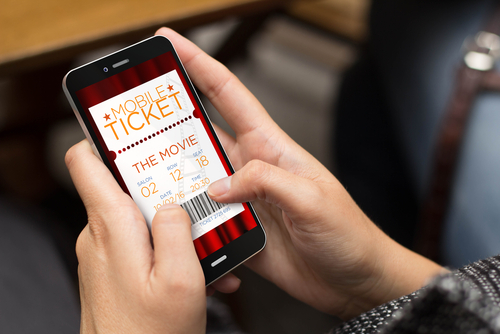
Retailers would do well to leverage beacon and geolocation capabilities, and launch location and time sensitive discounts and offers, attuned to changes in weather, cultural, political and other events. Marketers could take inspiration from the success of the Pokemon GO app, which is based on heavy use of beacon and geolocation technology. The Pokemon Go spirit of urgency and playfulness syncs well with today’s customer sentiments.
2. The Fusion of Social and Dynamic Feedback Delivers Rich Rewards
Social commerce is a rage now, but the potential for big disruptions still exist. At one pane, social commerce channels are in a state of continuous churn, with different channels becoming popular and obsolete among customers. At another pane, more ways emerge for consumers to interact with brands, and give feedback. Facebook’s Live and “Buy Now” button represents the evolving paradigm of the social space, making it possible for brands to reach consumers in new ways, and for customers to make purchases without leaving the social platform. Mintel, a market research firm, estimates 59% of consumers prefer being able to contact consumer service through an instant messenger.
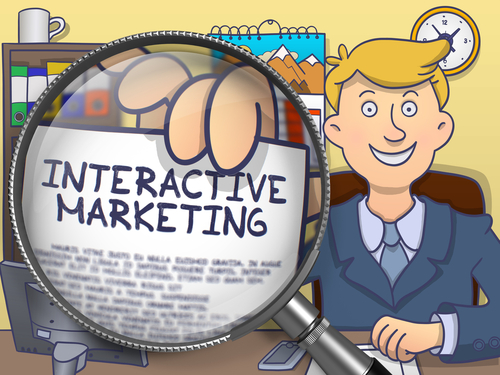
Smart marketers approach social channels not as additional avenues to advertise or promote their wares, but as avenues to gain sound and legitimate feedback. They also make it a point to respond to such feedback, and more importantly, act on it.
An application allowing customers to give feedback is a necessity in today’s business environment. Marketers would also do well to integrate the option of giving feedback to all customer facing apps, especially e-commerce e apps, and populate such feedback to different social media channels. An important consideration often overlooked is providing the opportunity to give feedback at any point of time, not just at a specific instance.
At another level, marketers would do well to deploy social listening tools to understand what is being said about the brand by customers. The most honest feedback is often what is said to friends and acquaintances, in informal settings, at different time spans, when customers start using the product or have experienced the service.
With 2017 tipped to be the year people start to speak to brands as easily and informally as they would with their friends, the stakes of capturing feedback and acting on it is at an all-time high.
3. Gamification holds the potential to deliver big efficiency improvements

While technology offers a world of possibilities, it is of little use to implement it if the employees do not use it. The key to success is not just in deploying the latest technology, but ensuring the rank and file use it, and this requires employee engagement. A recent Gallup poll estimates engaged employees to deliver 47% better performance compared to others. However, less than 50% of executives know how to improve it.
Gamification offers the solution. With mobile apps soaring in popularity, and more and more users accessing social media platforms through their mobile devices, gamification becomes a natural fit to boost engagement. Gamification also promotes collaboration, goal achievement, goal achieving, sense of community and comradeship, onboarding, and several other desirable behaviors.
Enterprises seeking to drive employee engagement deploy business-oriented games in employee facing apps, helping users learn new skills, new behaviors, and new ways of solving problems. Backed up by a system of rewards and achievements, and consistent positive feedback, such gamification techniques increase motivation as well.

Use cases for gamification in retail sales and marketing abound. For instance, a system of rewards and recognition of achievements in the internal employee apps encourage employees to help customers, boosting customer support to a great extent. Gamification strategies to enhance collaboration among salespersons boost information sharing, leading to better sales and erosion of data silos for analytics. The possibilities are endless.
The application of the above strategies boosts customer engagement and loyalty, which in turn increases sales volumes, with better ROI for the marketing dollar. It requires mobile apps to leverage such latest tech trends and deliver actionable benefits for the customer. The need of the hour is different apps for different stakeholders and different functions. The mobile app for the customer not just identifies and recommends products, but also suggests other products which may be of interest to the customer, facilitating cross-selling. Apps for shop floor managers keep track of inventory and sales, apps for salespersons offer provision to track tickets and update issues, analytic apps to make exploit customer trends, and more. However, the extent to which the app delivers results for the enterprise depends on solid design customized for the enterprise, and the extent to which the apps co-opt industry best practices in vogue.
Stay up to date on what's new

Featured Blogs
Stay up to date on
what's new













